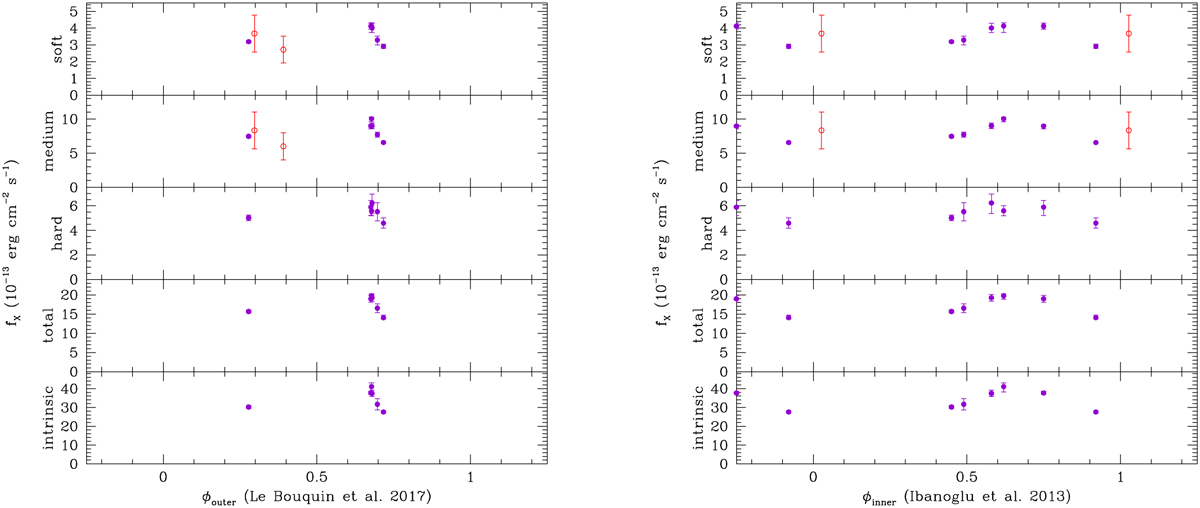Fig. 4

Download original image
Variations in the X-ray flux of HD 167971. Left panel: X-ray flux of HD 167971 as a function of the orbital phase of the tertiary component (Le Bouquin et al. 2017). Phase ϕouter = 0 corresponds to periastron passage. The top four panels correspond to the observed X-ray flux in four different energy bands: soft (0.5–1.0 ke V), medium (1.0–2.0 ke V), hard (2.0–4.0 ke V), and total (0.5–10 ke V). Violet filled symbols indicate XMM-Newton data, and open red circles stand for ROSAT observations. The bottom panel yields the flux in the 0.5–10 keV band corrected for absorption by the ISM. Right panel: same but as a function of the orbital phase of the inner eclipsing binary (Ibanoglu et al. 2013). Here ϕinner = 0 corresponds to the primary minimum of the eclipsing binary. Because the ROSAT-HRI observation spanned nearly one month (i.e. more than eight orbital cycles) it is not shown here.
Current usage metrics show cumulative count of Article Views (full-text article views including HTML views, PDF and ePub downloads, according to the available data) and Abstracts Views on Vision4Press platform.
Data correspond to usage on the plateform after 2015. The current usage metrics is available 48-96 hours after online publication and is updated daily on week days.
Initial download of the metrics may take a while.


